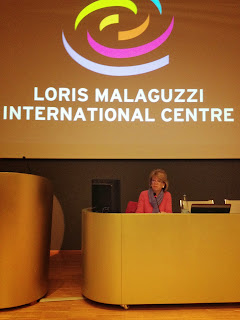Each new year is a grand question that unfolds over 365 days asking, “What does this year hold? During the course of the year hundreds of smaller questions appear, hover, perplex and delight. Hopefully many are answered.
In the spirit of a new
year, I resolve to ask more and better questions in 2014. Power tools for thinking and listening, questions make connections, unleash creativity, and
help solve problems
Statements can be clear
and concise, elegant and even poetic. While good statements have their place,
they can also give the feeling we have accomplished work only imagined. But when
we ask questions, we begin to know what we want to learn about and what we need
to find out. Questions direct our attention, open us to possibilities we can’t yet fully
imagine, and help in managing uncertainty about the future. Questions make us
learners. Questions developed with others make us part of a larger community of
thinkers and learners.
Over the next year, I hope
to make the most of different types of questions, ones that deepen
understanding and ones that clarify information; open-ended questions, research
questions, questions to get a conversation going, and questions to revisit. And
I resolve to ask more shiny questions in particular.
Polishing Questions
A shiny question starts off like many questions intended to guide a
project or extended work. When, however, the question is tossed, tumbled, and
polished by a group of people working together to explore and understand its
intent and potential, the question is strengthened, its meaning is sharpened,
and its language made explicit. It becomes shiny.
The original shiny question emerged through a lively,
collaborative process among members of several groups gathered to develop a
research question for community camps in a St. Paul neighborhood. Nearly 10 years later, the shiny
question has become the gold standard of questions for many of us who participated.
Fortunately, two members of the group, Nan Kari and Lani Shapiro, captured and shared the conversation and
related thinking that produced the shiny question. The following description
highlights pivotal shifts in the 2-hour discussion and the 5 versions that the
research question assumed.
Context
When a group of neighbors
from St. Paul’s West Side and the Neighborhood Learning Community (NLC) at Augsburg College
began planning neighborhood summer camps, they approached steering committee
members of the emerging Reggio-Inspired Network of Minnesota (RINMn) to develop
a research question to guide planning and learning from the camps. The groups,
NLC, RINMn and, Minnesota Children’s Museum,
enjoyed shared interests but had limited experience working together.
Inspired by the
neighborhood as a “living classroom,” All
Around the Neighborhood’s (AATN) free
camps would serve children 5-11 years living in or attending school on the West
Side. Children would explore the
neighborhood in weeklong camps that highlight contributions from the cultures
of people living in the neighborhood. Community members would serve as teachers
for the camps.
Opening Discussion
Background information about the
camps helped to both launch discussion and surface the need for additional
information.
An
AATN planning team member shared two themes to be woven into each camp:
learning about people and places in the neighborhood; and building and experiencing
successful intergenerational and intercultural learning communities. She also
shared questions AATN was curious about.
·
What do
children learn in a neighborhood-based learning environment?
•
What
competencies do children build through informal learning in a multicultural,
mixed-aged group of people?
·
How do
people, children and adults, learn about democratic principles/practices in a
neighborhood-based learning environment?
•
What skills
are developed when children are engaged over time in an intergenerational
learning community?
•
What do
children contribute to “place-making” on the West Side, when they are invested
in a neighborhood learning environment?
Following initial consideration
of the themes and questions, members of the group expressed a need for
clarification and additional information. How do the questions relate to goals?
How would AATN focus research? Would the questions actually tap into the interests
of community teachers? One suggestion was made to distinguish “what” questions from
“how” questions. Four criteria for framing the research question were also identified.
·
Simple
language
·
A straight
forward question
·
Worded to
allow making simple hypotheses
·
Lead to a
compelling story that can be told to others
Incorporating this group’s
perspectives on the themes and questions and adding criteria shaped an initial research
question.
First version: How do
children become connected to the neighborhood?
Developing the Question
With a question to focus on, discussion shifted to its
capabilities. Thinking about working with the
question, members of the group suggested that it should address:
- How children might express being connected
- Indicators adults use to interpret children’s connections to the neighborhood? (This accounts for adult filters)
- How we will know connectedness and what it looks like (Indicators)
- The nature of the child’s connection to the neighborhood
In generating these questions,
the group identified several factors at play. First, there were, in fact, two perspectives:
those related to children’s experiences and those related to adults’ noticing
children’s expressions of their connection to the neighborhood. This
distinction helped highlight the difference between “connecting” and
“experiencing.” Finally, distinguishing between adults and children prompted
consideration of age-related differences. The next version of the question
reflected these distinctions.
Second version: How do children of different ages
experience their community?
Peering
into the Question
The group shifted its attention to making finer distinctions. If differences in ages could affect children’s
experience of community, the group agreed it was also possible that children may
be connected to the community differently and they may not be connected to the
neighborhood. Connection to the neighborhood was likely a function of
children’s experience. The group wondered what
knowledge children create about their neighborhood, and how do they construct it.
At this point in the
conversation the group felt that the word community
seemed to carry more complicated meanings than neighborhood, especially considering that AATN is a neighborhood learning
program. This shift appeared in the next iteration of the question.
Third version: How do children experience this
(neighborhood) space?
Honing
the Question
Consideration of children’s prior experiences, their agency,
and the conditions for building connections to the neighborhood shaped the evolving
question.
The group picked up earlier
discussion about children having a range of prior experiences related to age,
cultural group, school experience, etc. While AATN would be one way they could
experience connection to the neighborhood, taking into account multiple prior
experiences was important as was providing various ways for children to express
their experiences.
With children as the
subject of the question, there was a focus on the child’s
experience; this, the group realized, also included the possibility that
children might not have the experience adults intended. The research
question, they agreed, should allow for this. Yet, the next version of
the question actually reduced children’s agency when the group thought about experiences
the camps might create for children that build or strengthen connections.
At this point the group
wondered how children become connected to the neighborhood. Referring to the
original set of questions, it identified 2 major pathways:
- Experiences leading–or not–to connectivity
- Children’s knowledge and competencies that build understanding of their neighborhood
Fourth version: How does AATN allow children to experience
the neighborhood?
Questions
Inside of a Question
Critical elements of the research question became
clearer in a set of sub-questions.
- What ideas do we have about children’s connections to the neighborhood?
- What constitutes connections?
- What details do children notice?
- How do they represent the details?
- What do we provide that facilitates their expression?
- How do they respond to each others' interests (Social connections)?
These questions helped draw
the group’s attention to relatively small changes in wording that signified meaningful
shifts in the next, and final, version: the child is the subject; building
connections is an active, on-going process; “the” neighborhood became “their”
neighborhood; and AATN’s role is identified.
Fifth version: How are children of different ages and
cultural groups building connections to their neighborhood through AATN?
Final Reflection
A final review of the question considered both content and language. A critical look at this version considered how it
allowed for different starting points; acknowledged children as active learners;
and accommodated variations in the pace of learning. The group also noted that it
also created an opening for children creating knowledge about the connections they make which the
research should capture.
- Each word in the question reveals something about our assumptions about children and ourselves
- Bridges/barriers facilitate children making connections
- Recognition that AATN participants will look at the research question through different lenses
An iterative process of framing a question, discussing and reflecting on it, and recasting it moved through these 5 versions.
#
1: How do children become connected to the
neighborhood?
#2:
How do children of different ages experience their community?
#3:
How do children experience
this (neighborhood) space?
#4: How does AATN allow
children to experience the neighborhood?
#5: How are children of different ages and cultural groups
building connections to their neighborhood through AATN?
Thank you to the May 2005 group: Kelly
Finnerty, Barb Murphy, Lani Shapiro, Patti Loftus, Sandy Burwell, Erik Skold,
Jeanne Vergeront, Linda Melcher, Nan Kari













